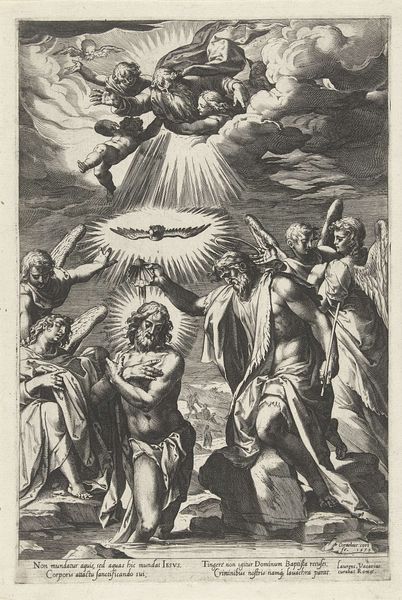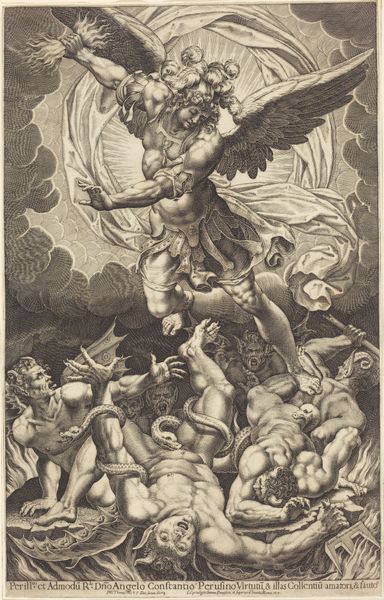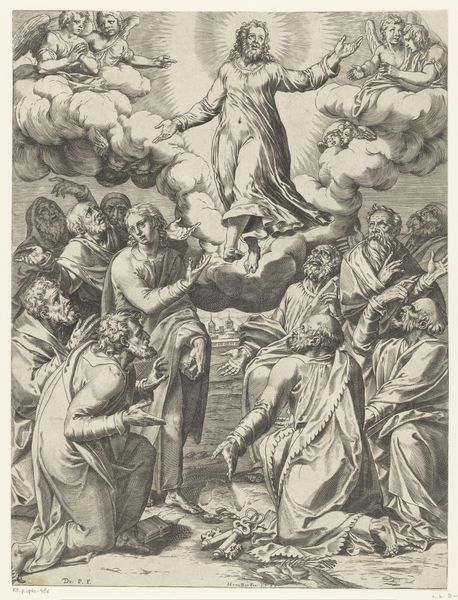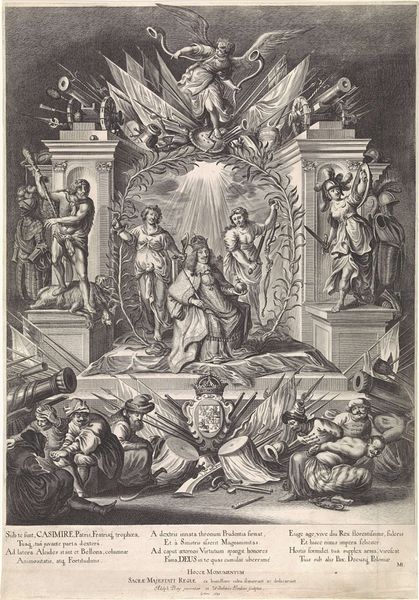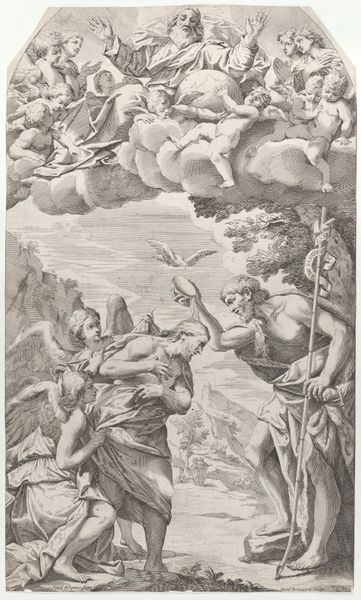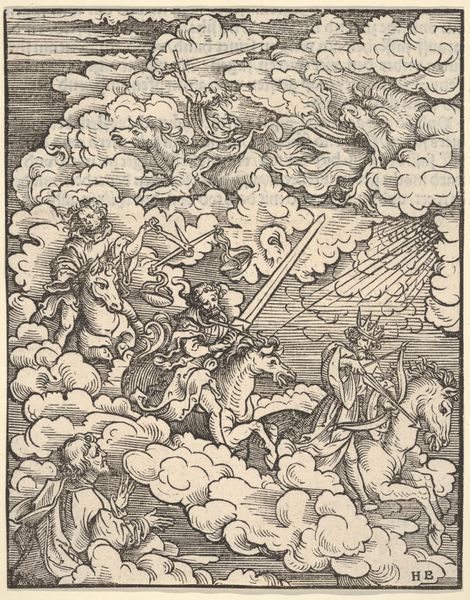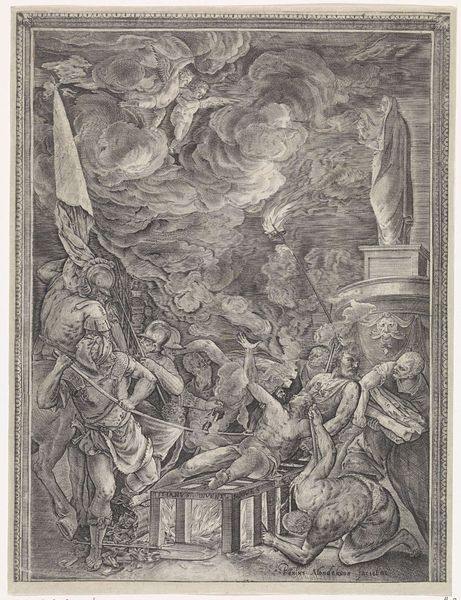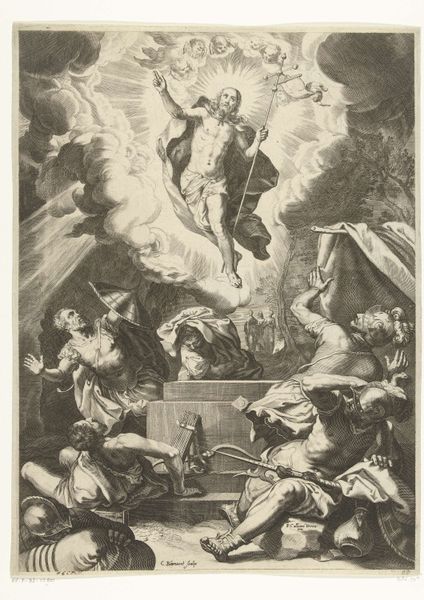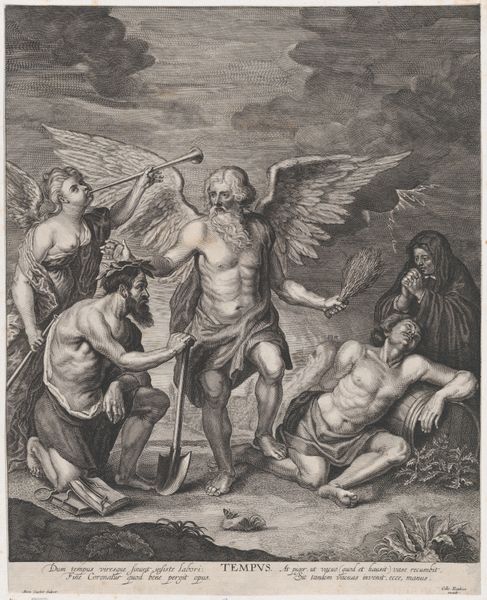
print, engraving
# print
#
mannerism
#
figuration
#
history-painting
#
engraving
Dimensions: 354 mm (height) x 213 mm (width) (plademaal)
Curator: Here we have Hendrick Goltzius’s engraving, "Sol," created in 1592, a fascinating example of Mannerist printmaking. Editor: My immediate response is intensity. The scene is crammed, chaotic, and dramatic, all rendered in incredible detail with tight linework. There's something unsettling about how packed it all feels. Curator: Absolutely. Goltzius masterfully employs symbolism here. We see Christ ascending, holding a banner of the Resurrection, emerging from a tomb that radiates divine light. The soldiers below are contorted in unnatural poses, their bodies echoing their spiritual defeat. Consider, too, how the rocks and turbulent sky add to the overall feeling of drama. Editor: From a craft perspective, think about the sheer skill and time that would have gone into carving those lines into a metal plate! Each stroke had to be deliberate. The final print is a product of physical labor and highly specialized expertise in a late 16th century workshop. We're not just looking at a religious image; we are also viewing an artifact produced through a precise method of reproduction, intended for wide circulation. Curator: Precisely, and consider how that wide circulation facilitated the transmission of specific theological and ideological messages. The radiant figure of Christ would reinforce beliefs regarding salvation. Meanwhile the Mannerist style, characterized by those exaggerated poses and dramatic composition, would appeal to its sophisticated viewers, reinforcing notions of status, wealth, and intellect. Editor: But let’s also acknowledge how that level of technical proficiency also reveals some issues inherent in that mode of production. Despite the attempts at drama, Christ's body seems oddly posed, his anatomy a little off. Was that intentional artistic license, or was it a struggle translating form through a labor intensive printmaking practice? Curator: It is the nature of Mannerism, challenging classical ideals! What might strike you as imperfect actually conveys the spiritual ecstasy and otherworldly power of the subject. Those elongated limbs and exaggerated muscles point towards a rejection of earthly constraints. It also illustrates an intentional distortion, meant to engage viewers on an emotional rather than a purely rational level. Editor: It's a reminder that these images don't appear out of thin air; they are materialized through very specific production methods that impact their aesthetic and reception. The printing press revolutionized communication but also reshaped the relationship between artists, patrons, and audience in tangible ways. Curator: I see “Sol” as reflecting both divine mystery and a tangible record of human faith and cultural memory, a belief system translated into visible form. Editor: And I would suggest seeing it also as the result of skill, labor, materiality, and social practices involved in early modern printmaking and distribution.
Comments
No comments
Be the first to comment and join the conversation on the ultimate creative platform.
